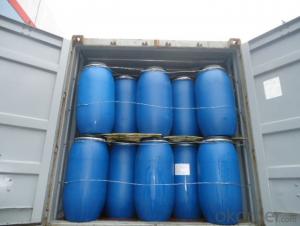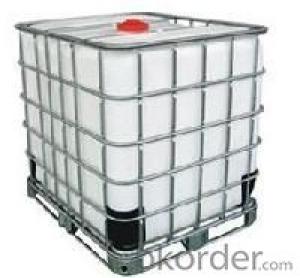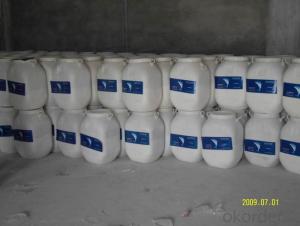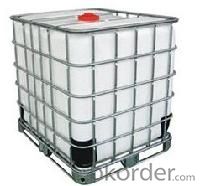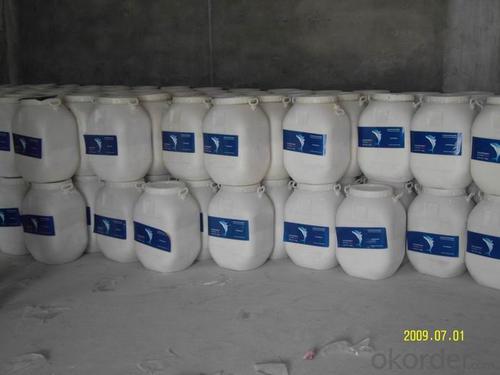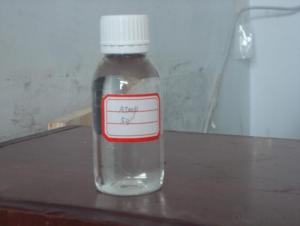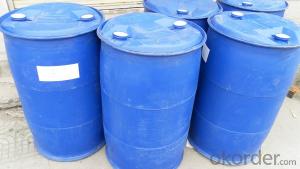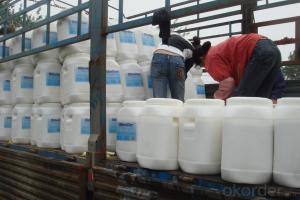Industrial Inorganic Salt Solid Sodium Hypochlorite Plant Quality
- Loading Port:
- Tianjin
- Payment Terms:
- TT OR LC
- Min Order Qty:
- 25 m.t.
- Supply Capability:
- 6000 m.t./month
OKorder Service Pledge
OKorder Financial Service
You Might Also Like
Sodium Hypochlorite
CAS NO: 7681-52-9
Chemical Formula: NaClO
Molecular Weight: 74.44
Appearance: Yellow transparent Liquid
Standard: HG/T2498-1993
Specification:
Available Chlorine: 8%-16%
NaOH: 1% Max
Transportation Info:
Class: 8 UN NO: 1791 PG:III
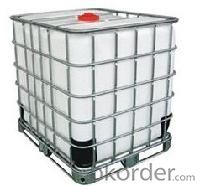
Application:
Disinfection for swimming pool, drinking water, cooling tower and sewage and waste water, food, and farming, hospital, school, station and household etc
Good bleaching and oxidation in paper and dye industry.
Normal Packing: 30kg drum, 1200kg IBC Tank
80% powder,90% granular 50kg Drum
25%,31% liquid 1250kg IBC drum or 250kg PVC drum
Capability:30,000MT/year
Molecular Formula: NaClO2
Molecular Weight: 90.45
CAS NO: 7758-19-2
Character: white,or pale yellow powder
COMPONENT | SOLID | LIQUID | ||
SODIUM CHLORITE | ≥80 | ≥90 | ≥25 | ≥31 |
NAClO3 | ≤4 | ≤2 | ≤1.5 | |
NAOH | ≤3 | ≤1.5 | ≤1.5 | |
NA2CO3 | ≤2 | ≤1 | ≤1 | |
NACl | ≤17 | ≤9 | ≤3 | |
NA2SO4 | ≤3 | ≤1.5 | ≤1 | |
SODIUM NITRATE | ≤0.1 | ≤0.1 | ≤0.1 | |
Production Property: This product has high content and stability, can easily dissolve in water, and has difficult hardpan. It is an oxidizing agent with high efficiency and an excellent bleaching reagent. The pure sodium chlorite is equal to 10 times of bleaching powder. The more important characteristic is that it has the moderate ORP (Oxidation Reduction Potential)
Application: Sodium chlorite is a kind of latest, efficient bleacher and bactericide. Previously, it is applied to bleach flax, cotton, fibres, textiles etc. Sodium Chlorite has been expanding its using fields with the running raise of people's concept, especially the further application of the fourth generation disinfectant (ClO2) on medicine and health, food-processing, aquaculture, drinking water disinfection, industry water treatment, dry flower procedure and so on.
- Q: Why the amount of catalyst is too small will make the chemical reaction rate slowed down
- Whether the chemical reaction can be carried out according to the change of free energy, but only according to the change of free energy can not determine whether the reaction can be completed, because the chemical reaction is also completed by the reaction of the energy barrier, that is, if the reaction energy barrier is high, To provide some energy, across the barrier, to complete the reaction. The energy barrier is called activation energy. And the role of the catalyst is to reduce the activation energy, so that in a relatively harsh environment, chemical reaction occurs.
- Q: Are biological enzymes harmful to humans?
- Recently, people are increasingly interested in the use of enzymes in cosmetics, not only from a technical point of view, but also from the market prospects and consumer awareness of these seemingly effective raw materials. Enzymes have been used in laundry detergent for more than 20 years and are linked to long-term performance with the ability to provide and enhance strong stain removal capabilities. According to some speculation, their positive response in the market may be interpreted as satisfying the aging population, the pursuit of younger needs to enhance the performance of cosmetics. The natural shedding process of the skin is controlled by the enzymatic reaction, and the specific enzyme dissolves the cell desmosomes that release the dead epidermal cells. These enzymes are produced in dead keratinocytes. Their active sites are phagocytosed with mercapto groups, and cleavage of peptide bonds in a manner similar to that of thio-glycolic acid and mercaptoalanine (plus derivatives) when the hair is broken. Use these types of enzymes and it
- Q: The "one-to-two change" of the catalyst is that the quality and chemical properties of the reactants are constant or the quality and chemical properties of the catalyst are constant?
- The change in chemical reaction rate is the same as the chemical nature and quality
- Q: describe a biological catalyst?
- One of the best known biological catalyst reactions is the Fixation of Nitrogen. Biological Nitrogen Fixation (BNF) occurs when atmospheric nitrogen is converted to ammonia by a bacterial enzyme called nitrogenase. Microorganisms that fix nitrogen are called diazotrophs. The formula for BNF is: N2 + 8H+ + 8e? + 16 ATP → 2NH3 + H2 + 16ADP + 16 Pi Although ammonia (NH3) is the direct product of this reaction, it is quickly ionized to ammonium (NH4+). In free-living diazotrophs, the nitrogenase-generated ammonium is assimilated into glutamate through the glutamine synthetase/glutamate synthase pathway.
- Q: Is the catalyst in the field of inorganic chemistry?
- In particular, the chemical and homogeneous catalysis of inorganic chemistry has deep origins. Inorganic chemistry, oxides (such as metal oxides), family elements (such as the chemical behavior of transition metal elements) can be provided for catalytic science Support and guidance.
- Q: Cl + O3 ---> ClO + O2O + ClO ---> Cl + O2= O + O3 ----> 2O2What is the catalyst? The intermediate?How do you know which is which? If the rate law is rate=k [O3] [Cl]determine:a) the overall order.b) unit for k.c) the rate determining step, justify your answer.
- Cl is the catalyst. ClO the intermediate. The catalyst is the component which does not change in overall reaction. He forms some intermediate component(s) with the reactants. In the later reaction steps the intermediate(s) react forming the catalyst in its original state. (a) The overall order is the sum of the orders with respect to the components: n = 1 +1 = 2 (b) the unit of the rate of reaction is r [=] mol/ (Ls) (more general mol per unit time and volume) compare dimensions mol / (Ls) [=] k · mo/L · mol/L =k [=] L/(s mol) (more general unit volume per unit time and mole) (c) First reaction For elementary reaction steps the order of the reaction rate with respect to a reactant is equal to stoichiometric coefficient. Hence the rate of first reaction is: r? = k?·[Cl]·[O?] Overall rate is given by the rate determining step, while other reaction steps are in equilibrium: r = r? = k?·[Cl]·[O?] If second reaction is the rate determine step r? = k?·[O]·[ClO] while reaction 1 is at equilibrium K? = ( [ClO]·[O?] ) / ( [Cl]·[O?] ) =[ClO] = K?·( [Cl]·[O?] ) / [O?] the overall rate would be: r = r? = k?·[O]·[ClO] = K?·k?·[O]·[Cl]·[O?] / [O?] = k·[O]·[Cl]·[O?] / [O?] That doesn't match the observed rate law
- Q: Is the catalyst in the chemical reaction better?
- No, you can. Too much useless
- Q: What is the difference between an enzyme catalyst in a living body and a catalyst in chemistry?
- enzyme susceptibility inactivation Chemical catalyst under certain conditions, due to poisoning and loss of catalytic capacity; and enzyme than the chemical catalyst is more fragile, more volatile activity. Any factor that makes the protein degenerate (to strengthen the acid, alkali, high temperature, etc.), can make the enzyme completely lost activity.
- Q: In the chemical reaction will have to use the catalyst reaction, such as H2O2 === (MnO2) H2O + O2 ↑, then the catalyst in the end to participate in the reaction (that is, the catalyst itself is the reactant) If so, why are some of these substances in the reaction (these substances refer to the catalyst) in the reaction after the quality and nature of the change does not change?
- The composition, chemical properties and quality of the catalyst itself do not change before and after the reaction; its relationship with the reaction system is as highly selective (or specific) as the relationship between the lock and the key. A catalyst does not catalyze all chemical reactions. For example, manganese dioxide catalyzes the thermal decomposition of potassium chlorate, accelerates the reaction rate, but does not necessarily have a catalytic effect on other chemical reactions. Some chemical reactions are not only the only catalyst, such as potassium chlorate can be thermally decomposed to catalyze the presence of magnesium oxide, iron oxide and copper oxide and so on.
- Q: Now, i am studying for my biology exam in 3 weeks time...i stumbled upon catalase, and then checked my book its catalyst...now im confused...is there a different among these 2 terms? i think..catalyst is the when a substance brings up or about a chemical reaction without using itself up and then catalase breaks down the toxic by-product of metabolism, hydrogen peroxide, into water and oxygen.Or am i wrong?please explain what is catalyst and catalase in biology or are they the same, just differently?
- an enzyme that decomposes hydrogen peroxide into oxygen and water.a substance that causes or accelerates a chemical reaction without itself being affected. To put thing simply, a catalyst is any substance that speeds up a chemical reaction. These can be natural or manmade. Catalase is actually a specific type of naturally-occuring catalyst, an enzyme in cells that decomposes hydrogen peroxide (Which is extremely toxic to life!) into harmless components. Catalase enzymes are highly concentrated in the aptly named cell organelles known as peroxisomes. Just remember- if the word ends in -ase, it's a type of enzyme! :) Hope this information helps!
Send your message to us
Industrial Inorganic Salt Solid Sodium Hypochlorite Plant Quality
- Loading Port:
- Tianjin
- Payment Terms:
- TT OR LC
- Min Order Qty:
- 25 m.t.
- Supply Capability:
- 6000 m.t./month
OKorder Service Pledge
OKorder Financial Service
Similar products
Hot products
Hot Searches
Related keywords

